“Most of us Indians didn’t like Eric Williams and his PNM and would be glad to see them go. But we had no interest in seeing the Eric Williams black gang replaced by another black gang led by Granger/Daaga and company.
“[…] Once Williams had got the news that a genuine Afro-Indian unity march was coming, he would have hopped on the waiting plane at Piarco and the government would have fallen. Williams didn’t go and, once he was assured by Bhadase [Sagan Maraj] that a mass of Indians were not coming with the Afros to Port-of-Spain, he decided he might as well call the state of emergency and choke down the Black Power Movement.
“Let me say it again. There was no significant Indian-African unity through the Black Power Movement in 1970.”
The following Letter to the Editor, which contradicts the claim of Afro-Indian unity within the 1970 Black Power Movement and suggests the most significant flaw in NJAC’s strategy, was submitted to Wired868 by Ramdath Jagessar.
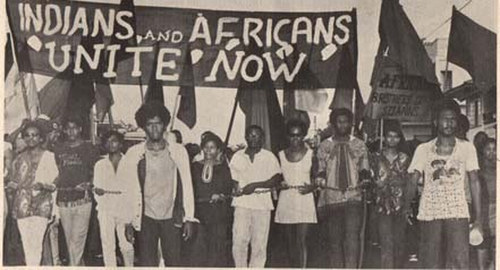
(Courtesy Embau Moheni/NJAC)
This kind of romanticisation of a failed attempt at Afro-Indian unity through the Black Power March to Caroni is at best embarrassing and at worst disgusting. NJAC people have to stop writing this kind of rubbish.
Get blasted vex if you want. But I have to tell you straight: the Afro-Indian unity march to Caroni was a failure. It didn’t attract any significant number of Indians. Even though it passed through heavily Indian-populated areas like San Juan, Curepe and the Southern Main Road down to Chaguanas, Indians did not join in any large or small number along the way. Afro-Indian unity in the march just did not happen.
If the intention of the march was to bring down the Eric Williams government by pulling in significant numbers of Indians along with the Africans to a triumphant march back to Port-of-Spain (and I hope it was!), that was a failure too.
Before and after the march, the NJAC gang made no headway in attracting measurable Indian support. And that applies for the years after 1970 up to this day in 2018.
I was one of the hundreds of Indian students at The UWI in St Augustine from 1967-70 when the Joint Action Committee and then the National Joint Action Committee started the Black Power run. I didn’t join up, even though Granger (he wasn’t Daaga yet!) invited me to do so. I didn’t observe any of the other Indians joining up either or expressing sympathy with the emerging Black Power Movement. They didn’t go to the February 1969 protest against the Canadian Governor General. They didn’t go to the meetings held at the Guild Hall or elsewhere on campus. That’s it for Afro-Indian unity through the Black Power Movement at The UWI up to 1970; it never happened, it never even came close.
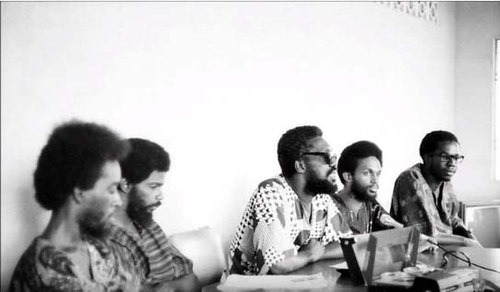
(Courtesy Embau Moheni/NJAC)
And why weren’t we interested? Because that Black Power Movement had nothing for us Indians. The whole thing was couched in African garb. They wanted more power for black people. They were attacking Eric Williams and the PNM for kowtowing to the French creoles and white community in Trinidad and preventing black people from getting MORE employment, more opportunity, more upliftment.
Most of us Indians didn’t like Eric Williams and his PNM and would be glad to see them go. But we had no interest in seeing the Eric Williams black gang replaced by another black gang led by Granger/Daaga and company. In our opinion, the PNM had power in Trinidad, real black power, meaning control of the government, the military, the entire Treasury, including all of the petroleum royalties, and Williams, as Corporation Sole, controlled over 70% of the economy. And these NJAC people wanted more power than that?
Now as to the Afro-Indian unity march itself, let me touch upon a few rotten eggs mentioned in this article.
Brinsley Samaroo says that Ken Parmasad was “one of the leaders of the BPM” through his writings in OWTU’s Vanguard newspaper and in guaranteeing the security of the March to Caroni. What drivel and nonsense is this?
Leading up to 1970, Parmasad was a leading light at The UWI’s Society for Propagation of Indian Culture (SPIC), a very conservative group that would have nothing to do with black power. He may have been on his way to becoming a lunatic Marxist-Leninist, hence his writings in OWTU’s Vanguard newspaper. OWTU was a leftist workers’ union, the furthest thing from a supporter of the Black Power Movement. To make Parmasad one of the leaders of the BPM through his articles in the Vanguard is total rubbish and Samaroo should be ashamed to utter it.

(Courtesy NJAC)
Besides, what could Parmasad do to guarantee the security of the March to Caroni? He was a nobody in Caroni. Did he have his own soldiers to counter those of Bhadase Maraj had the order been given to attack the march?
The writer quotes Samaroo going into fairy-tale territory in declaring that Ken Parmasad had gone into all the villages along the route of the march “and really conscientised those people.” He says that because of Parmasad’s work, old Indian women and men “were prepared to stand against Bhadase!”
I don’t know whether to laugh or cry at this container-load of bullshit!
So, nobody Ken Parmasad had gone into all the villages and conscientised those people to support Afro-Indian unity so that they were ready to stand against Bhadase? The writer believes this new superman single-handedly conscientised those tens of thousands of Indian people along the route to the extent they would stand against the big boss Bhadase with all his power and his gunmen?
Was this Bhadase, the head of the sugar workers’ union, the head of the Hindu Maha Sabha, the Rajah of Caroni, the millionaire heavyweight at the height of his power, who could so easily be neutralized by little campus mouse Ken Parmasad? Who would say such stuff? Who would believe such tripe as little old Indians defying Bhadase Maraj?
Some comments from Samaroo about the mythical Afro-Indian unity of 1970 and his role in preparing the community for the March have caught my attention.
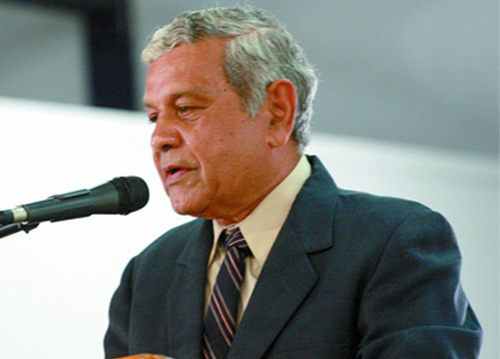
(Copyright Bocas Lit Fest)
Samaroo said he was “press-ganged” into Black Power activism by Daaga, Kambon and Ome, and he assumed the role of “conscientising” the masses, presumably Indian masses. His task was to educate the masses on Indian and Indian diaspora history across the country. Here we go again with another superman, junior lecturer Brinsley Samaroo educating the masses to prepare them for the coming of…Afro-Indian unity!
Are we to believe that Samaroo’s lectures on Indian and Indian diaspora history did the job of preparing the masses for the unity to come? How many hundreds of lectures would that have taken? Why would Indians in country villages want unity with Africans whom they saw as their enemies?
This was the era of intense competition between the mostly Afro PNM and the mostly Indo DLP, remember, an era of barely disguised racial hostility. The enthusiastic junior lecturer Samaroo seems to think he dispatched all that with a few brilliant lectures and the writer of this article agrees. I don’t know which of the two is more deluded.
Samaroo is quoted as relishing this moment of inter-ethnic nationalism: “The high point in the history of Trinidad and Tobago was when Africans and Indians came together.” And when was this? He says 1970! Didn’t I just say there was no significant racial unity, no moment of inter-ethnic nationalism in 1970 and specifically none in the Afro-Indian unity march? Samaroo’s myth-making and self-serving recollections have no limit.
Perhaps Samaroo and the writer were talking about the reception of the Afro marchers by the Indians of Caroni and seeing this as some kind of racial unity and inter-ethnic nationalism. But here too I have to apply the bucket of ice water.
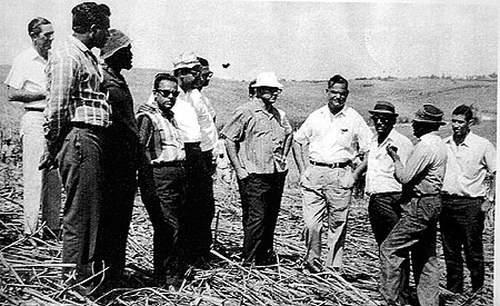
Bhadase had instructed the people of Caroni to welcome the marchers but not to join them and that is what Indian people did. He had also instructed his gunmen to open fire on the March if the Afro marchers misbehaved, and I believe he had asked them to fire if it looked as if Indians were defying his orders and joining the march. Since neither of those things happened, the gunmen stood back and allowed the march to continue. That is all there was to it.
If you want to interpret Indian people offering cool drinks to the Afro marchers or a meal and a place to sleep overnight as Afro-Indian racial unity and inter-ethnic nationalism, then I have some good swampland for you to buy in Florida.
Now as to the much fantasized return march from Caroni to Port-of-Spain, the writer says, “In the euphoria of the successful March to Caroni, the BPM sought more direct confrontation with the social and political elites by planning a march to Port-of-Spain. This planned march triggered the State of Emergency on 21 April.”
I have to take issue with this.
He says the BPM planned the march to Port-of-Spain, not the Indians of Caroni. Are we to assume that numbers of Indians would be joining this march in defiance of Bhadase and his gunmen waiting in the bushes? Not a chance! Some country Indians might be ignorant but they were not stupid and they knew Bhadase was not a man to joke about such things. There was never going to be any large number of Indians on that return march and that was the whole point of such a march. NJAC had bungled the whole thing the previous day and lost their chance to return to Port-of-Spain with a mass of Indians and Africans.
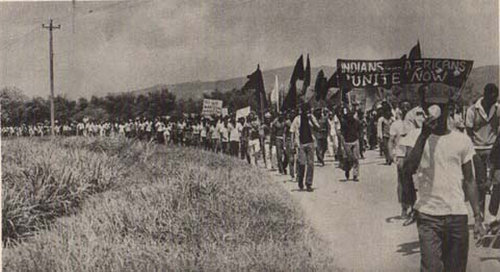
(Courtesy Embau Moheni/NJAC)
They didn’t have to actually reach Port-of-Spain. Once Eric Williams had got the news that a genuine Afro-Indian unity march was coming, he would have hopped on the waiting plane at Piarco and the government would have fallen. Williams didn’t go and once he was assured by Bhadase that a mass of Indians were not coming with the Afros to Port-of-Spain, he decided he might as well call the state of emergency and choke down the Black Power Movement.
Which he did.
Here a word about Bhadase which many have not considered. Why did he tell his gunmen to attack the Caroni March and why did he tell the Caroni Indians not to join the march? Because he had nothing to gain from the march. If the march picked up a mass of Indians, his Caroni Indians, and the Eric Williams government fell, NJAC would become the government and he, Bhadase, would get nothing. NJAC had promised him nothing as far as I know.
I don’t know if NJAC even had a meeting with Bhadase or sent emissaries to confer with him and that may have been Daaga’s biggest blunder of 1970. Why didn’t he offer Bhadase a senate seat or an ambassadorial post or even a lot of money if the PNM government fell and NJAC took over?
You see, in 1970, Bhadase was a politician down on his luck. He had been thrown out of the DLP he had founded, his people had been defeated in the 1966 election and this former MP and Opposition Leader had nothing and no hopes of getting anything. His old enemy Eric Williams had no respect for him. Nobody had any respect for Bhadase politically.
But as sugar union leader, he had the allegiance of many sugar workers; as Maha Sabha leader, he had the allegiance of tens of thousands of Hindus; as the man who had built dozens of Hindu schools and had given education to the Hindus, Bhadase was a man to be reckoned with in many areas, except politics.
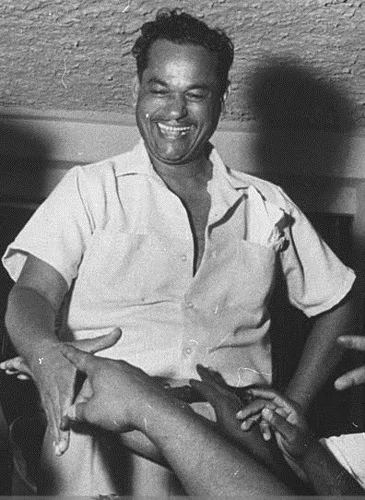
Bhadase had something NJAC wanted badly and this was the ability to get a bunch of Caroni Indians to join a march that could bring down the PNM government. So why didn’t NJAC send somebody to ask Bhadase to allow the Caroni Indians to join the march and ask him outright what was his price?
Bhadase was a veteran politician and a very smart man on the ground and he would have seen immediately how he could benefit from a big I.O.U. signed by Makandal Daaga. It would cost him nothing to tell the Caroni Indians unofficially to go ahead and join the march; Baba says it’s OK. Bhadase would have nothing to lose if the march failed and Caroni Indians did not join up in numbers.
I stand to be corrected if my information is wrong but I have heard nowhere that NJAC did the diplomatic encounter thing with Bhadase. Daaga was a poor strategist and an even poorer organizer. I know. I attended that major NJAC strategy meeting in TIWU offices in early 1970 and saw for myself what a bungler he was and how he was frustrating the UMROBI delegates from the South and many others. The damn fool attempted to give his “My people” public speech to the delegates from all over the country at the strategy meeting!
Instead of talking to the Caroni bossman, NJAC attempted to get their Caroni Indians into the march in defiance of Baba, relying on featherweights like Parmasad and Samaroo.
Why then did Bhadase come to some understanding with Eric Williams? I’ve been told that Bhadase told Williams, “Come by my house, Bill. Nobody will touch you here.” It’s simple. Williams was a veteran politician and he could offer Bhadase something that he wanted. NJAC was offering nothing at all and something beats nothing any day of the week.
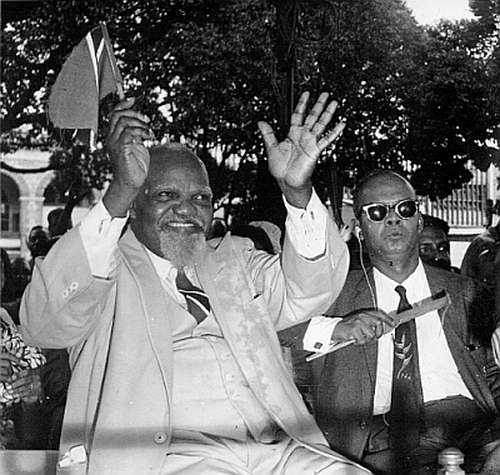
(Copyright Trinidad Guardian)
Samaroo says in the article that Bhadase feared the cultural-racial implications of permanency in the unity between Indians and Africans. I ask, what unity? NJAC never got any unity between Indians and Africans and certainly got nothing of consequence in the Afro Unity March. How could Bhadase fear permanence of a unity that never existed? Really, this man Samaroo is too much!
The writer takes a lag at Kumar Mahabir’s writings on the BPM, which he believes suggests that the Indian-Trinidadian intelligentsia was most concerned about 1970 because it came too close to achieving broad-based Indian-African unity. Again this nonsense about broad-based Indian-African unity in 1970!
Let me say it again. There was no significant Indian-African unity through the Black Power Movement in 1970. There was no significant Indian-African unity in the Caroni March. There was no broad-based or narrow-based Indian-African unity in 1970. I don’t call Rajah Ramlogan and Josanne Leonard Indian-African unity.
There wasn’t even African unity through NJAC in 1970 or at any time since then. Most of the Africans stayed with the PNM and have stayed there. NJAC contested several elections in majority African constituencies and got convincing blows every time.
Who then had got African-Indian unity in Trinidad in recent times? Eric Williams and the PNM is the answer. In 1956, the PNM picked up most of the Muslim community, most of the Presbyterians and some assorted other Indians, amounting to well over 10% of the Indian community. And they have kept those Indians and gained others, reaching as much as 15% of the Indian community in my view. I don’t like the PNM, as you may have guessed, but facts are facts.

I think it’s time to put an end to this little sampat of this foolish and self-delusional article. It’s too easy. There’s a whole bag of other errors, misconceptions, plain old doggy doodoo in this article but I fear I may tire the reader.
Those who disagree with my response are invited to list them out point by point and make their case against each point. One sentence responses calling me ‘deluded,’ ‘racist,’ ‘trouble-maker,’ ‘old fool’ and other such endearments just will not cut it.
Want to share your thoughts with Wired868? Email us at editor@wired868.com.
Please keep your letter between 300 to 600 words and be sure to read it over first for typos and punctuation.
We don’t publish anonymously unless there is a good reason, such as an obvious threat of harassment or job loss.
 Wired868 Wired868 for smart sport news and opinion
Wired868 Wired868 for smart sport news and opinion
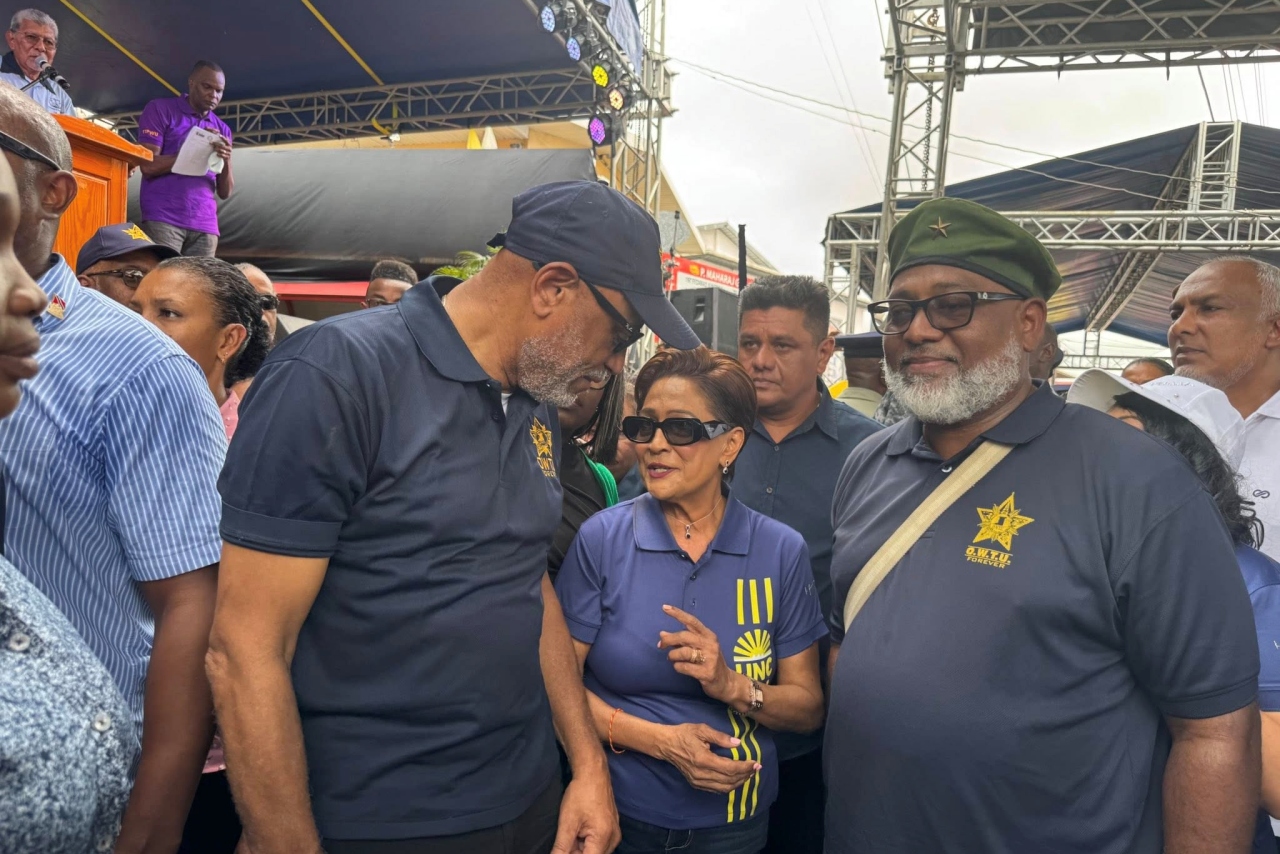
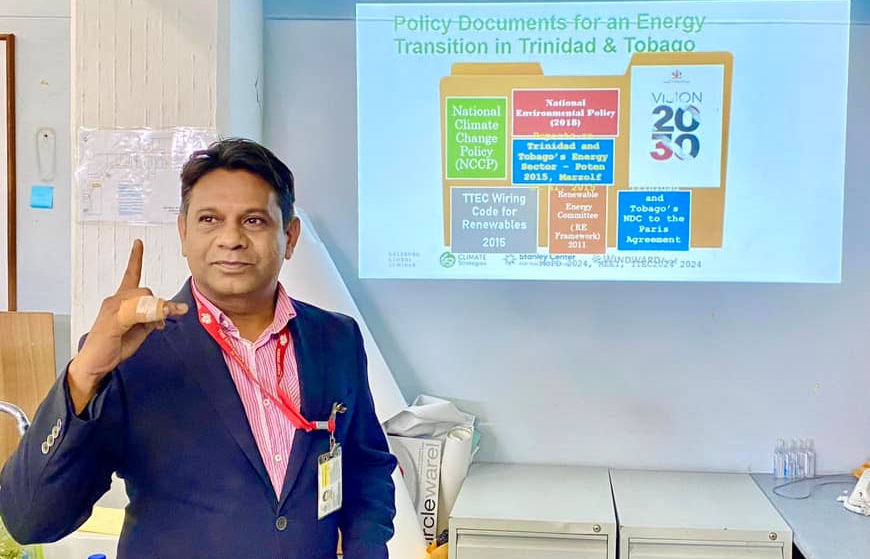
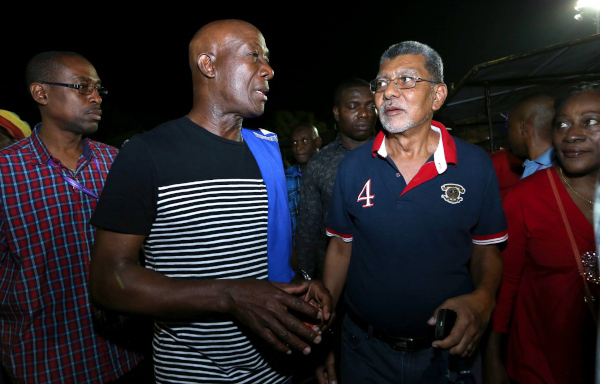
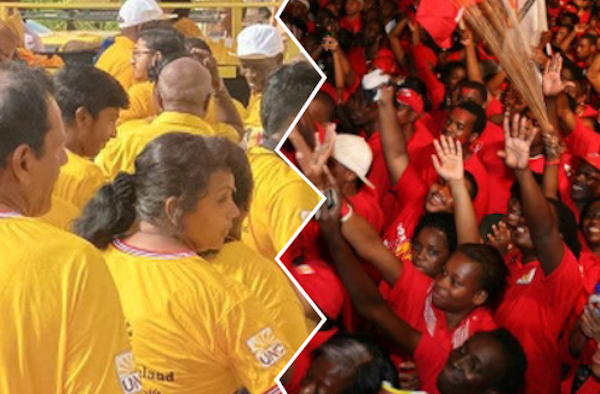
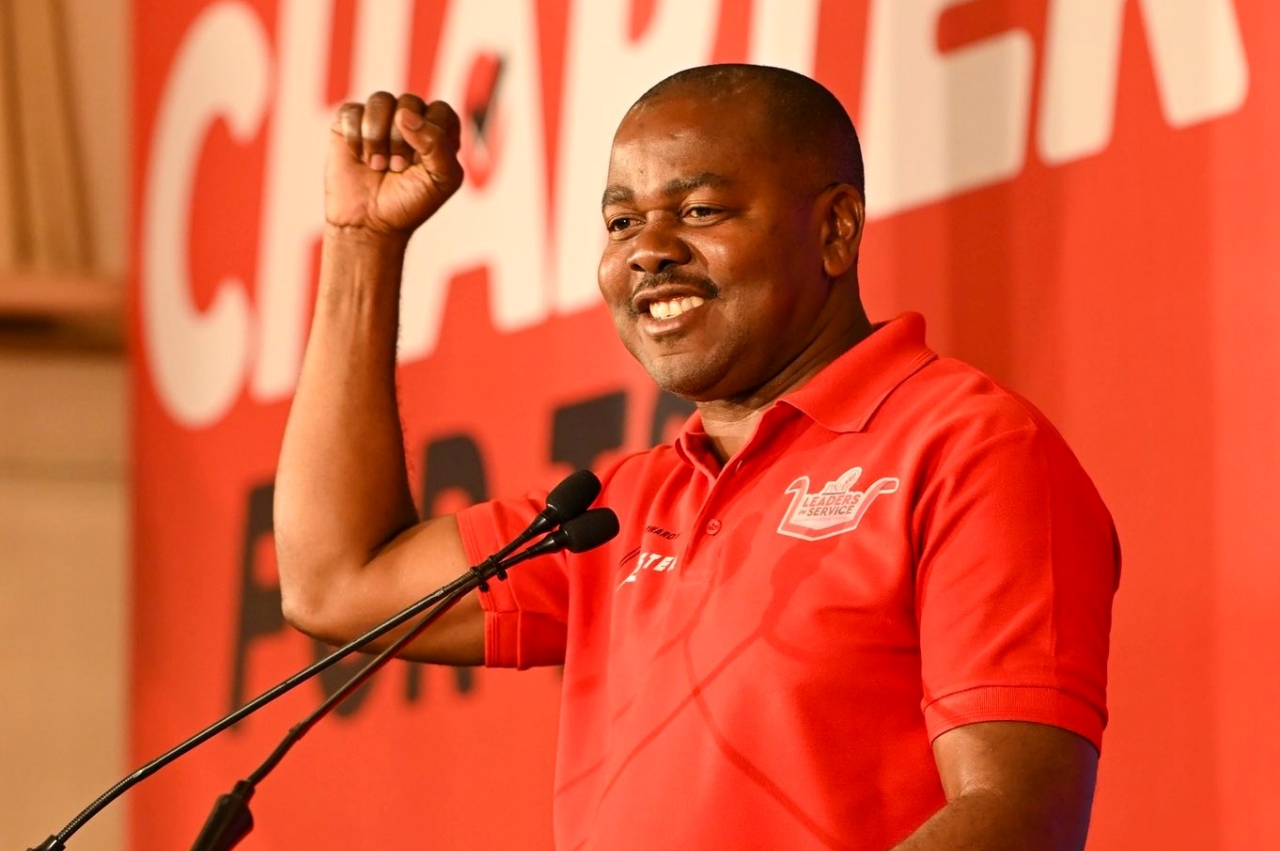
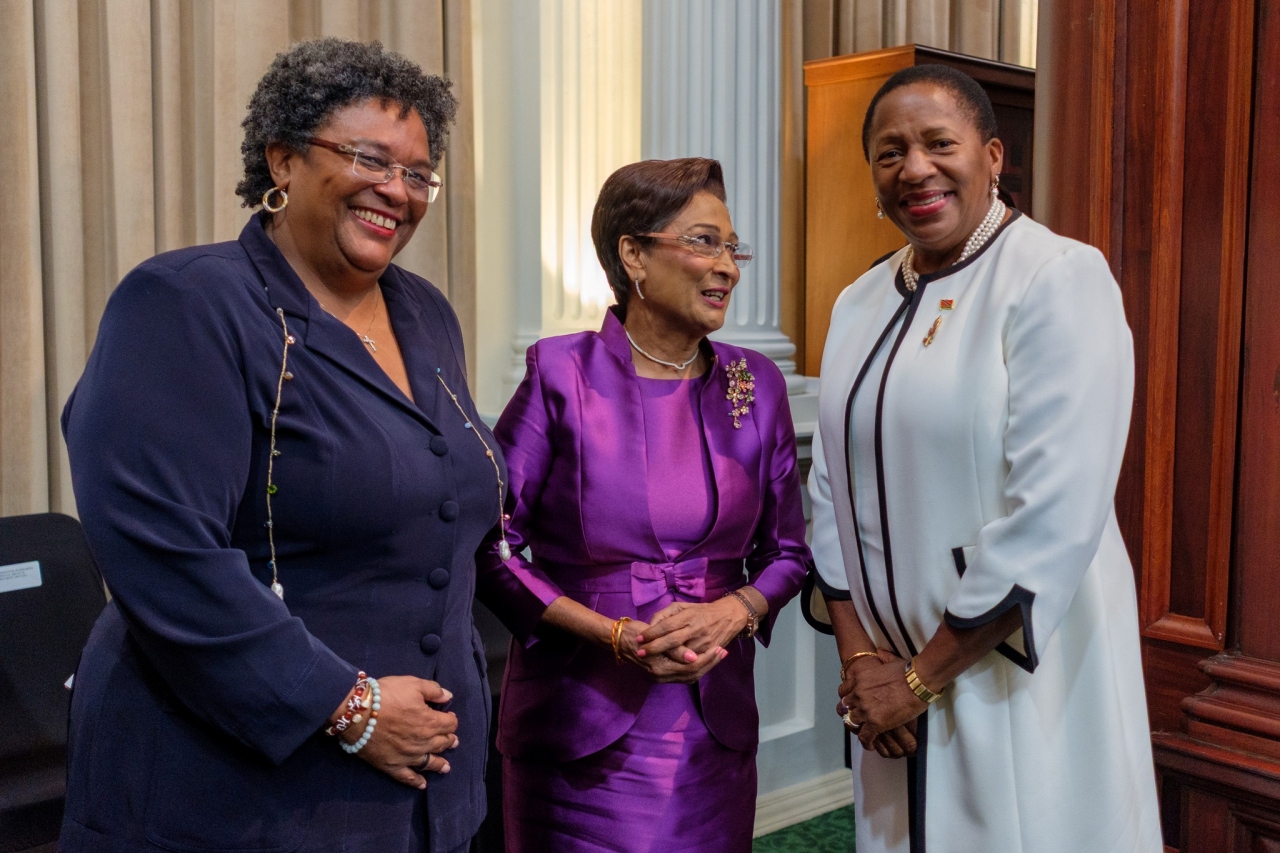
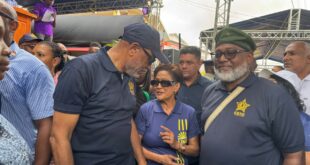
Unity in Trinbago is as fake as a $3.00 bill, good luck with that shit.
Bhadase and Williams have this country where it is . The Politicians and businessmen are the product of them . All for the rich . All races must unite as one . Only trinbagonians.
Brian Harry can you identify any of this “language surrounding the BPM” that was “not inclusive”?
one word: BLACK or maybe two: BLACK POWER
By not inclusive I simple meant that it was not inviting to the Indians.
It spoke only about what we want but not about what you can have. Thus it would have appeared to the Indians as – this is just about blacks .
but I thought anyone who wasn’t white…was black?
Kwesi Prescod when we speak of race, there are more than two. People of different backgrounds have different needs and expectations.
Brian, you are projecting the enlightened position of today on 50 years ago. 50 years ago the “one drop of blood” policy persisted ans the global norm. You were either white or black. there was no recognition of brown (ask the American Indians), or L, B, T or Q.
50 years ago, the “black” liberalisation movement was a movement of all non-white, marginalised groups…or should have been.
Kwesi no doubt my friend. But we have to accept that all didn’t see it that way
Brian Harry But Indians are also Black and I have heard many of them happily admit to that fact. Also if you know the early history of India you should be aware that the first settlers in India were from East Africa and in ancient times India was actually referred to as a part of East Ethiopia.
Ian Socapro Henry is doesn’t matter! As a people they have their needs and wants. The message was very Afro.
their needs were different? or the politics demanded something else.
people forget that by 1980/81 Sat Maharaj openly campaigned for Williams’ PNM to shore up that Concordat arrangement – something which was opposite to the positioning of the original DLP.
Brian Harry Also the evidence of the Black Power Revolution being inclusive is that many Indians benefited and were able to get jobs in banks and other organisations thereafter that were previously reserved for Trini-Whites.
Kwesi Prescod could be both.
Ian Socapro Henry so you have evidence?
Brian Harry It is a fact that Indo-Trinis benefited just as much as Afro-Trinis from the BPR. If you are not aware of that then you don’t know the history of jobs at banks and other organisations pre and post the 1970 BPR.
Brian, it can’t be both, the way I see it.
One narrative is so distorted from fact to manipulate people TODAY.
Ian Socapro Henry if it’s a fact show me!!!
Kwesi Prescod ok. I believe in messaging
Brian Harry Go and do interviews with older folks who were working and doing jobs and regularly visiting banks in T&T during the late 1960’s and into the 1970’s and they would tell you that prior to the 1970 BPR the staff were mostly white and then after 1970’s the number of Indo and Afro-Trinis faces among Bank staff started to increase. The same goes for other organisations including government services. Go ask your parents or your Grand parents if you are not old enough to have observed the change for yourself. There are also video interviews on YouTube with folks talking about the positive changes at banks etc after the 1970 BPR. Don’t be lazy as I can’t do all of your home work for you.
Ian Socapro Henry I’ve been around the older folks who were a part of it. I’ve heard the discussions
Brian Harry You can also check YouTube. There are a series of video interviews they did with people talking about the benefits of the 1970 BPR and who benefited.
Ian Socapro Henry ok
Ian Socapro Henry , please keep in mind that you are debating someone who once made the astonishing and mind-numbingly stupid observation that there is no evidence that racism influenced colonialism or vice versa. This despite all the mountain of information documented by scholars that can be obtained right through his smart phone; this in spite of all the primary writings that are available online — you can read what certain influential colonial officials had to say in their own despicable words. So don’t expect too deep of any kind of analysis coming from him.
Any 14 year old can go through the writings of people like Ms AC Carmichael, Rev J Scrimgeour, Lord Harris, GF Huggins to see plainly that this society was created by Europeans *for* Europeans and that the African and Indian labouring classes had only one role in life and that was serve the needs of the elites. It certainly wasn’t to occupy the highest rungs of political and economic power.
Ian Socapro Henry yet all they saw according to the author is
Williams black gang being replaced by another black gang BPM! Even said Daaga was a poor strategist and a fool basically in not so many words. Meanwhile the fact that Madras(blackskinned) Indian could now access certain employment and other perks along with their dark African counterparts, clearly meant zip, zilch, zero to those that exist in a space of perpetual discontent. Sigh
A Corey Gilkes who made that absurd assertion? Whistle if it’s BH.?
Here we go again..One person is responsible for history?..Geddes did not do this..Geddes did not do that…History is made by the masses…
That Geddes didn’t do a great job building a bridge with the East Indian brothers has been widely discussed. Its not new. The language surrounding the BPM was not inclusive and I could see with that point. I have no issue with his thoughts and they are well worth deeper discussion
Onika that is why we take the chance of publishing some of the emotive things we do. With the hope that creating a better understanding of each other is the first step towards reconciliation.
Except that was over 800 words eh mih bredda? if I recall correctly the word limit?
Lol. We make exceptions at times. We do for Dr Claudius Fergus for instance. Case by case basis. ?
Lasana Liburd ok noted for when I submit my opus #myeyesonyou
Submit away!
T&T has a fascinating history of waves of migration. People came from Haiti after the Revo, the Merikins came and were settled in Moruga, people from the Eastern Caribbean have settled too, Portuguese, Syrians, Lebanese, Chinese, indentured Indians. I’ve lived in Senegal and know that some names from Tobago resonate like Wolof names. Multicultural nations can be difficult to manage/govern. But everyone needs to have space at the table, I think that our system doesn’t help. A national assembly as in Mauritius might have been better at nation-building. Still, we’re not a totally lost cause, I don”t think.
T&T was probably the only country in the Caribbean which also had a large percentage of Indenture West Africans who came with their religion and culture intact after the Slave Trade was abolished in 1807 and also after Slavery itself was abolished in 1833. This happened due to a much larger labour shortage in T&T than in the other Caribbean islands so between 1807 and 1845 quite a number West Africans were brought to T&T to work as Indenture labours to help make up for the labour shortage in T&T. This allowed T&T to have a much higher retention of African culture and religious practices than one would would have otherwise expected after the cultural and religious oppression that enslaved Africans experienced.
Ian Socapro Henry but where in Trinidad? I dont really see that of which you speak
Onika Nkrumah-Lakhan As I said there are colonial records of West Africans who came to T&T to work as Indenture workers between 1807 when the Slave Trade was abolished and 1845 before the official colonial policy became to get the majority of their Indenture workers from India. These West African indenture workers integrated with the ex-enslaved Africans but helped to reintroduce elements of West African religious practices and culture like Orisha religion, Ibibio influence in calypso, Kongo/Kalinda influence in stick fighting, etc. This is one of the reasons why the Orisha religion is so strong in T&T despite our highly multicultural mix. This strong West African influence also helped to shape the evolution of Calypso during the 1800’s.
Ian Socapro Henry i don’t doubt that, I was just alluding to the lack of cultural connection with Africa amongst Africans in this country. A malaise, an indifference. Apart from Orisha and fragments retained via stickfighting, calypso etc. There’s a big disconnect/identity crisis, I dont see the intergenerational passing on of the language, African surnames etc that such recent African indentureship 1845 should have made possible. I guess colonialism and its effects took care of that?!
Onika Nkrumah-Lakhan I guess because the West African indenture workers who came between 1807 and 1845 were largely outnumbered by the enslaved Africans and because they integrated with the enslaved African population they didn’t have the impact of getting the majority of the ex-enslaved Africans to adopt African surnames, etc and to start identifying more closely with Africa rather than their European colonizers. I believe between 1807 and 1845 mainly West Africans and Chinese were brought to T&T as indenture workers before the colonial policy was switch to Indians in 1845. However there is strong West African retention in the Orisha faith that is still practiced in T&T by people like Ella Andall and of course the West African musical retention is very strong in our Calypso.
Senegal. Cool. Ancestry.com gives me a % of Senegalese DNA. Which names in Tobago sound Wolof?
Onika Nkrumah-Lakhan So are you from Tobago? I believe Calypso Rose traced her ancestors to Guinea through stories she heard from her Grandmother.
Ian Socapro Henry I’m a true Trinbagonian. Mother from Tobago, father from Trinidad
Job is definitely Diop in Senegal or Jop in The Gambia.
Onika Nkrumah-Lakhan A lot of people don’t know that Shadow was actually born in Belmont, Port-of-Spain but was taken to live with his Grandparents in Tobago at just 3 months old.
Ian Socapro Henry yep its seems to be an unofficial mandate with them Tobagonians, I myself spent two of my formative years with the grandparents there, after all it does take a village! That’s one positive Africanism, we need to maintain and build upon.
Onika Nkrumah-Lakhan Very good African tradition, allowing your child to get some upbringing with their grandparents, especially when parents are trying to get on with their careers or feel their child is getting into the wrong sort of company.
Kala Ramnath many of the indentured came from Sierra Leone where the recaptured slaves were settled. Professor Arthur Porter, former principal of Fourah Bay College in Sierra Leone did some research on the topic. BTW Cudjoe, Quashie, Qwamina are Ghanaian names and have survived in Tobago, probably because of the indentured presence
I think that much more research is needed. Remember too that these broad terms of African and Indian have great variety within them. Subsets with very different experiences of interaction within their own broad racial groups and with the other. Now that i find fascinating. At the end of the day, I agree all these stories need to be vented, but this should have happened at least 2 decades ago.
Agreed. But it’s never too late? It ain’t over till the fat lady sings?? If I see that heifer, is toilet paper in she tail✊?
Trinidad needs a National conciliation committee! Like what happened in Rwanda, I think South Africa also. A proper forum. You heard it here first! So that both Indian and African can lay their chips on the table and get to the bottom of all the legends, ill-feelings , myths, half-truths, miscommunication, political shenanigans etc. Each side must be open and honest about their baggage. I’ve always wondered why some Indians seem to have an axe to grind against Africans, because through my lens I don’t see what we may have done from Eric Williams Time and or before to warrant such. Then, I’m sure the Indian sees things differently and may or may not have a case. What is the real underlying reason that they never seem able to unite with Africans for any type of nationalist agenda. Not independence, not revolution, nothing ! What is the fear, is it of blackness and black leaders, as the author stated”we had no interest in seeing the Eric Williams black gang replaced by another black gang led by Daaga”. . Honesty is necessary. Is it a superiority complex, is it religion-based? This national conciliation effort must have on its panel, true patriots, real historians for proper context and historical data and then whatever other community leaders of both groups etc If we could keep politicians out of it it would be great. Although they may of necessity need to be a significant part of the process. That’s the only viable way forward out of tribal politics I can envision. And the continued slide into destruction. Trinidad and Tobago is still a blessed place, a heaven, I don’t know how humans does manage to shit up paradise. Of course, equity must be a part of this conversation. Equal rights and justice*Peter Tosh voice* But alas, this may be too big a dream.
I have done my own research on this topic and believe I understand where the root of our artificially created Afro-Indo divisions comes from and its mainly based on us not fully knowing and being taught our true history on both sides. This history leads to the enlightening facts that both ethnic groups go back to the same roots before a divide and rule agenda was implemented by colonizing invaders.
But Ian, I outlined all of this:
https://coreygilkes.wordpress.com/2017/12/29/yes-let-indeed-talk-about-race-dr-mahabir/
And I am by no means the first to do so. Hell, even Kurt Allen explained it in song some years ago.
I believe that by fleshing out all perspectives of the narrative we will tend to better understand fundamental truths.
Romanticismand cynicism from all sides would be burnt away under such scrutiny. Teach these narratives in school I say.
I don’t much like the tone of the piece but as he says he tells it how he sees it through his own lens and raises a lot of salient issues. And admits that BSM was a thug, but one who played an important role in setting up Hindu schools at a time when Hindus were officially marginalised in the society. I think I mentioned before that my birth certificate called me illegitimate till the late 70s/early 80s – only because my parents happened to be married under bamboo acc to Hindu rites. So we can see where Bhadase drew his power from: colonial shenanigans; divide and rule. That said, I think this area is massively under-researched which is a real shame because its such a critical time in our history. I’m not sure if our historiaas at UWI are sleeping on the job but so much still that needs to be fleshed out for the record.
He set up Hindu schools by using the Concordat – that political instrument used to open the then Catholic and Presbyterian schools to the masses.
Some of the money he used to build those schools came from the Government. Which is still the case today.
Kwesi Prescod but because of political, spatial and cultural marginalisation, these things resonate. Getting back to the piece, I think the author is right: there was never really the same sort of reaching out as far as i can tell, or even an appreciation of the idea of cross-racial working class solidarity as distilled by Walter Rodney and the WPA there. Rodney genuinely believed this. But fighting powerful race-based forces on either side is a tough job..
This piece has real value. This raw, politically and racially forged personal testimony speaks volumes, not about the aims, objectives and achievements of the BPR but about the the value system of the author and the important historical figure of Bhadase Maraj thereby inadvertently shedding light on the historic and contemporary challenges involved in bridging the ethnic divide between the two major races in Trinidad and Tobago.
And if Afro-Indo unity never happened in T&T during the Black Power Revolution for argument sake just as our former colonial rulers would have engineered it not to then why we who are intelligent and better educated now, are not fighting for a bright and prosperous future for T&T by making it happen today?
How long are we going to continue promoting racial divisions in T&T that serve a divide and rule elite colonial agenda?
Its time to wake up my people, T&T has no bright future for rich or poor or for any particular ethnic group outside of a small elite circle as a divided nation fighting against itself.
Check the history books and you will see that most great nations which have fallen, fell mainly due to internal divisions that were deliberately created by those seeking to conquer and rule for the benefit of an elite few and the oppression and exploitation of the vast majority.
What is the class bias of uwi? Who set it up? The affranchised slave class as Fanon called them.Read the introduction to wretched of the earth
I don’t know about great but lots of pertinent issues raised, but in the hands of a great historian, this period would certainly be a whole lot clearer to people. Bizarre that we havent had a thorough analysis from UWI.
This is a great article. It poses very pertinent questions. And proposes very interesting answers to same.
Great article.
Ooohhh dear!!!!!
We have no formal history. And like we have no consensus on an informal one either. Dang.
I have read a book about four years ago at our library within which the author listed declassified diplomatic cables available in the UK which had the view that Bhadase was a feared thug who must not be allowed to hold political power. These cables are more in line with this writer’s view of Bhadase. This book is the first piece of history I have read of this period which listed official documents that are available in the UK on T&T and Guyana. The book also has the first incident of corruption involving Ministers of Government here. Not all these cables are declassified but interpreting what is available is a start for those who have the time and resources. Most of our history will remain informal without examining official documents written at the time. I will seek to get the name and author.
Lester please do.
I read about bhadase and the fear the British had of him. We need to understand our history